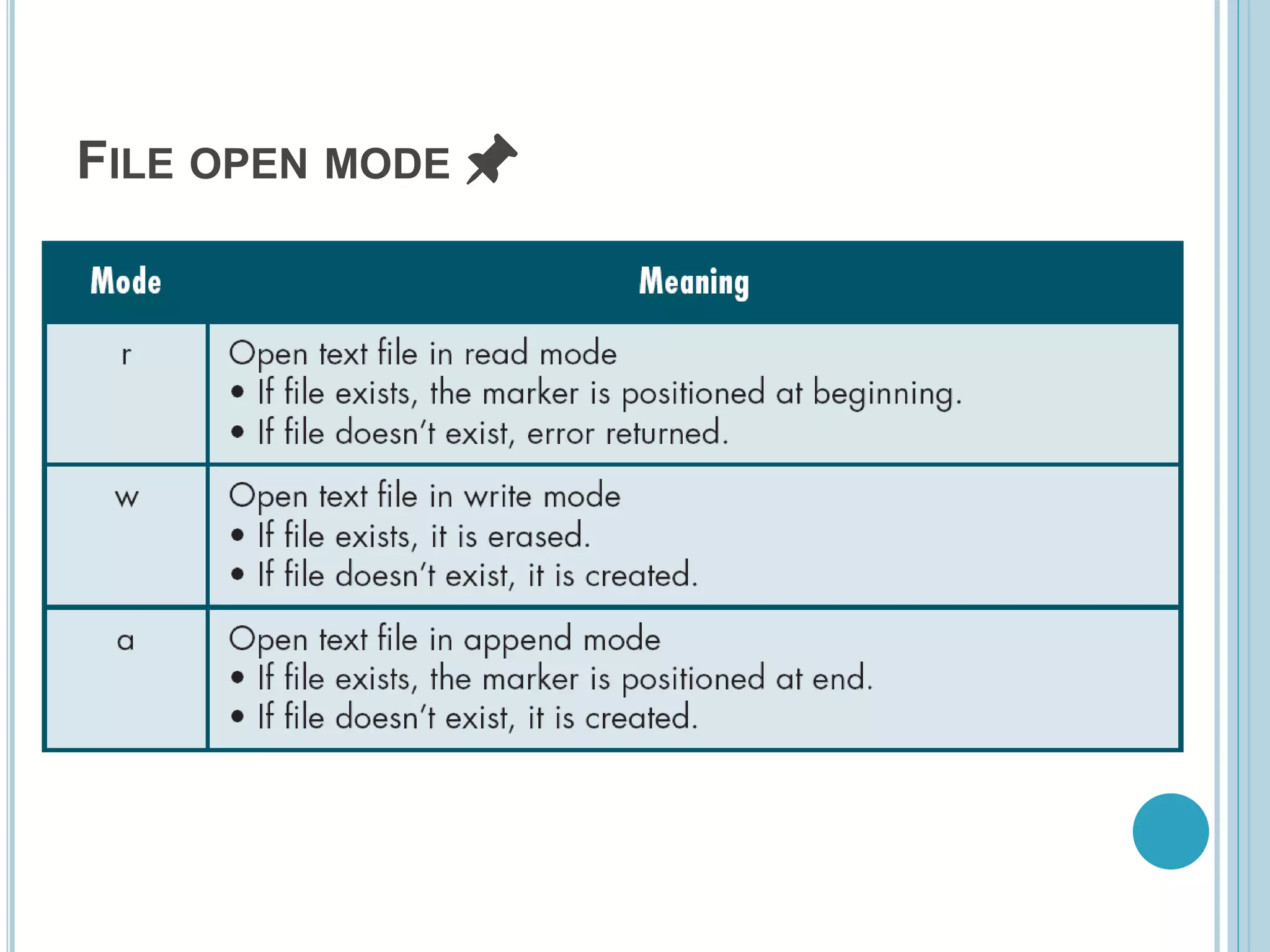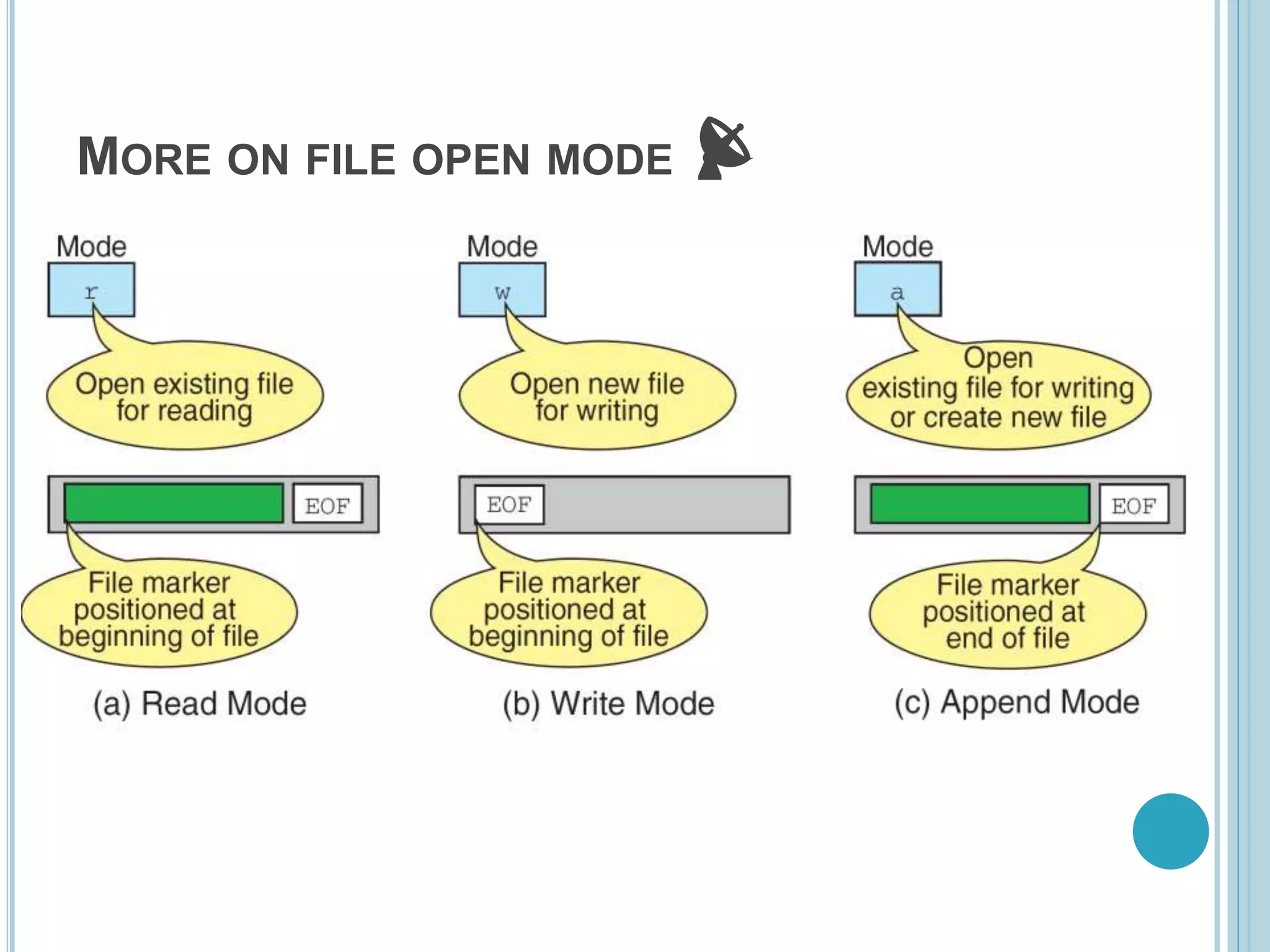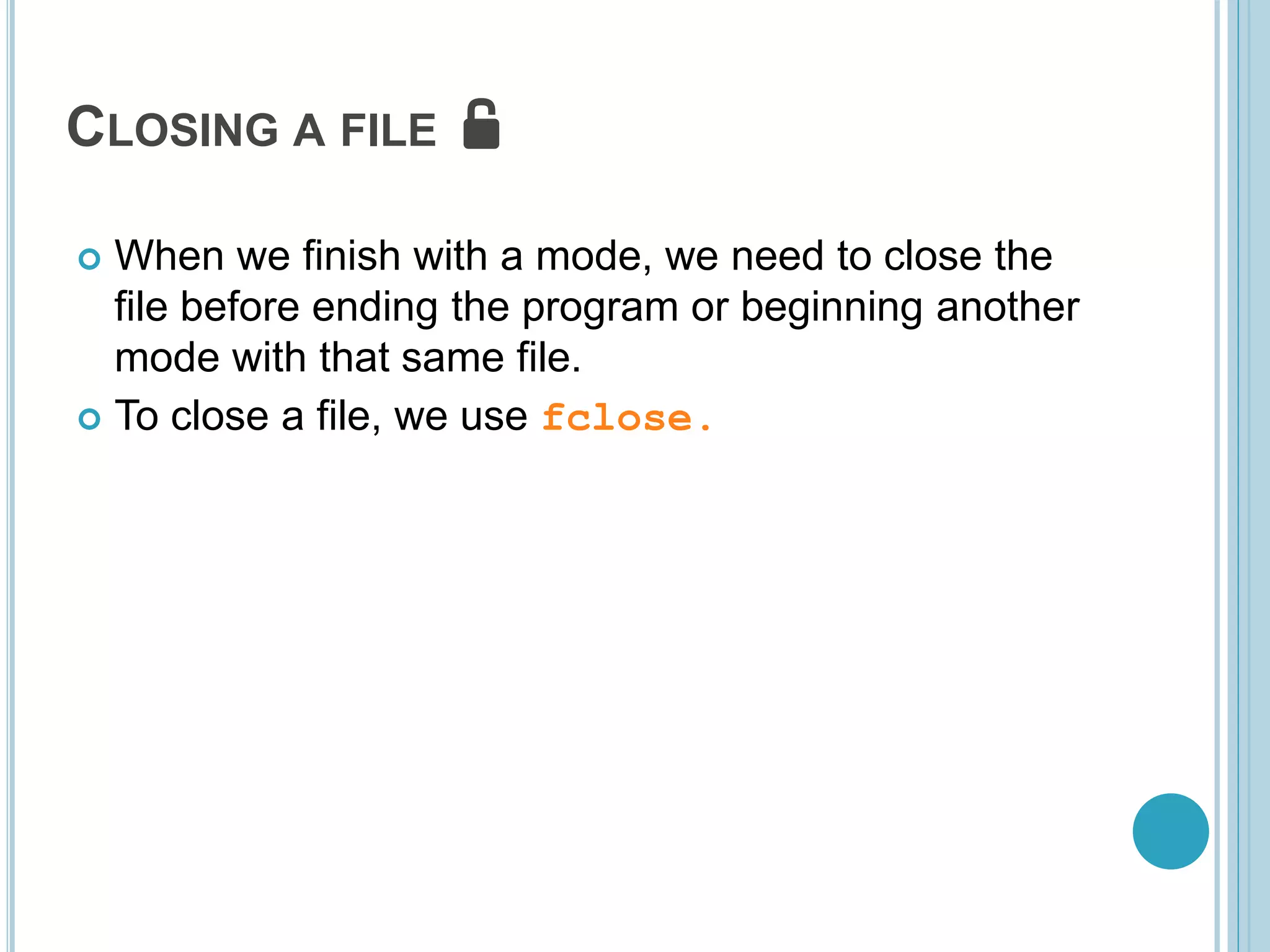This document introduces file handling in C programming. It defines a file as a collection of related data stored on secondary storage. Files allow data to persist when a program terminates. The document outlines different file operations like creation, opening, writing, reading and closing. It provides code examples to create a new file, read from an existing file, and append data to a file. It also discusses file organization and open modes.

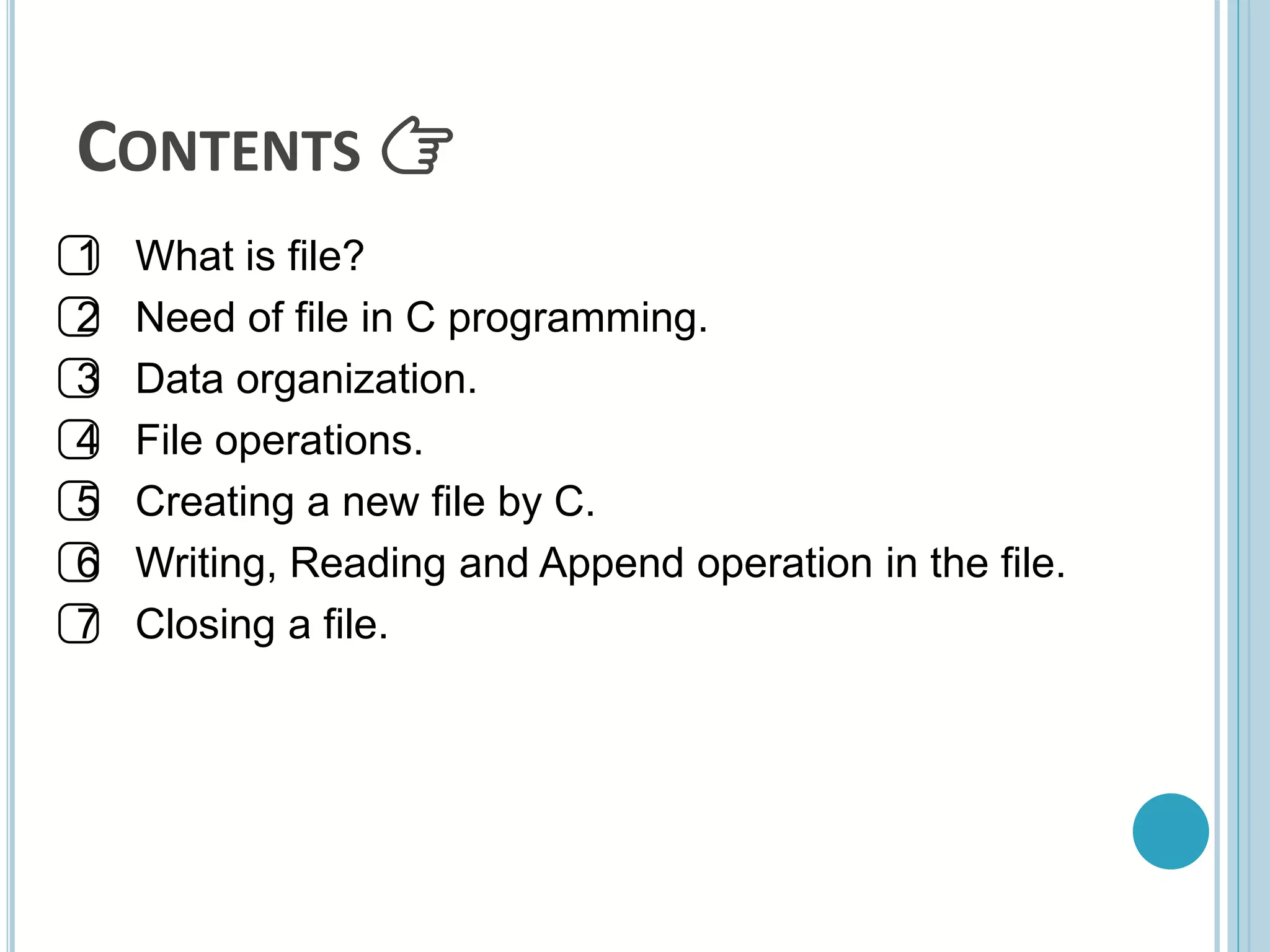
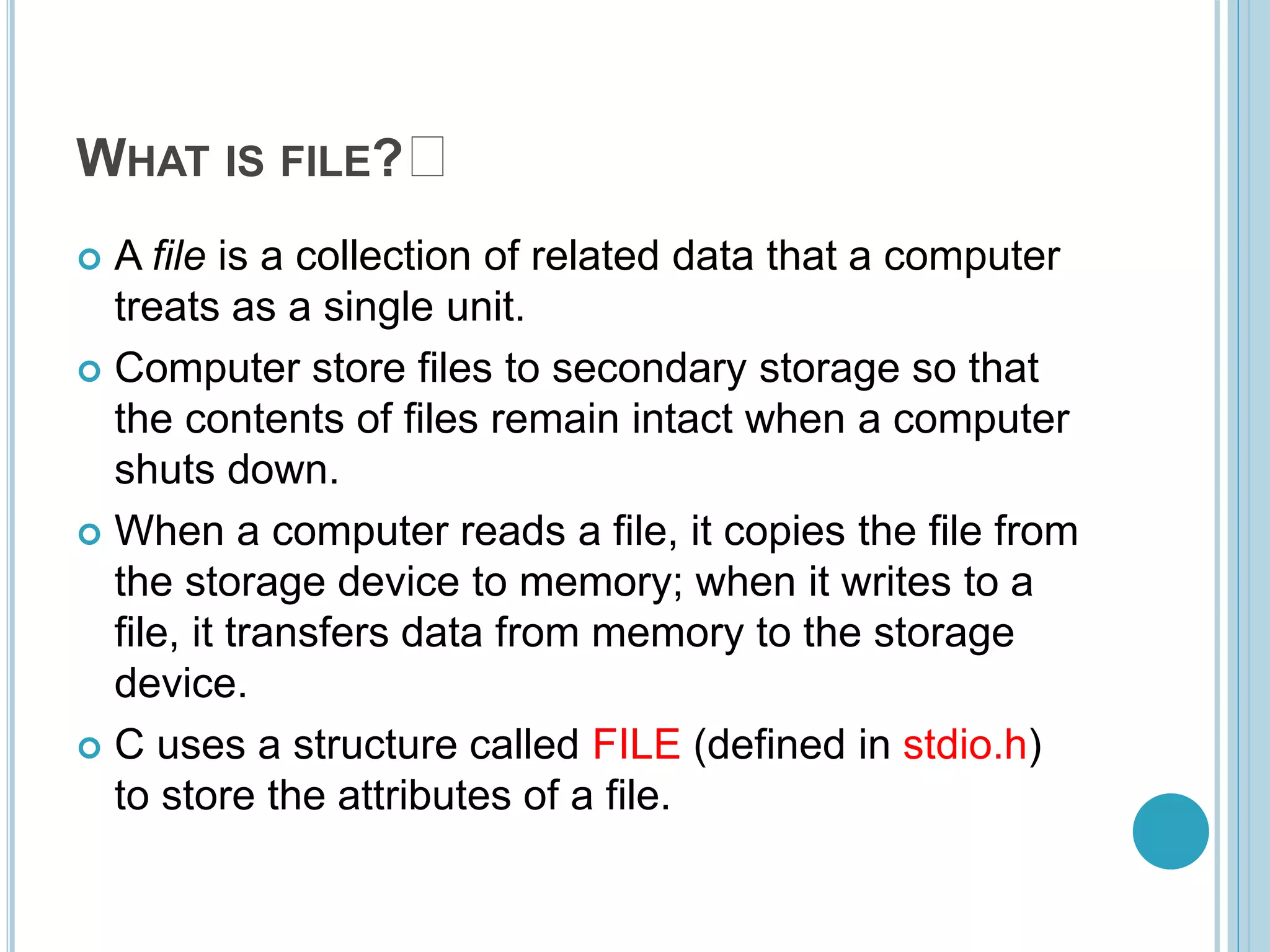
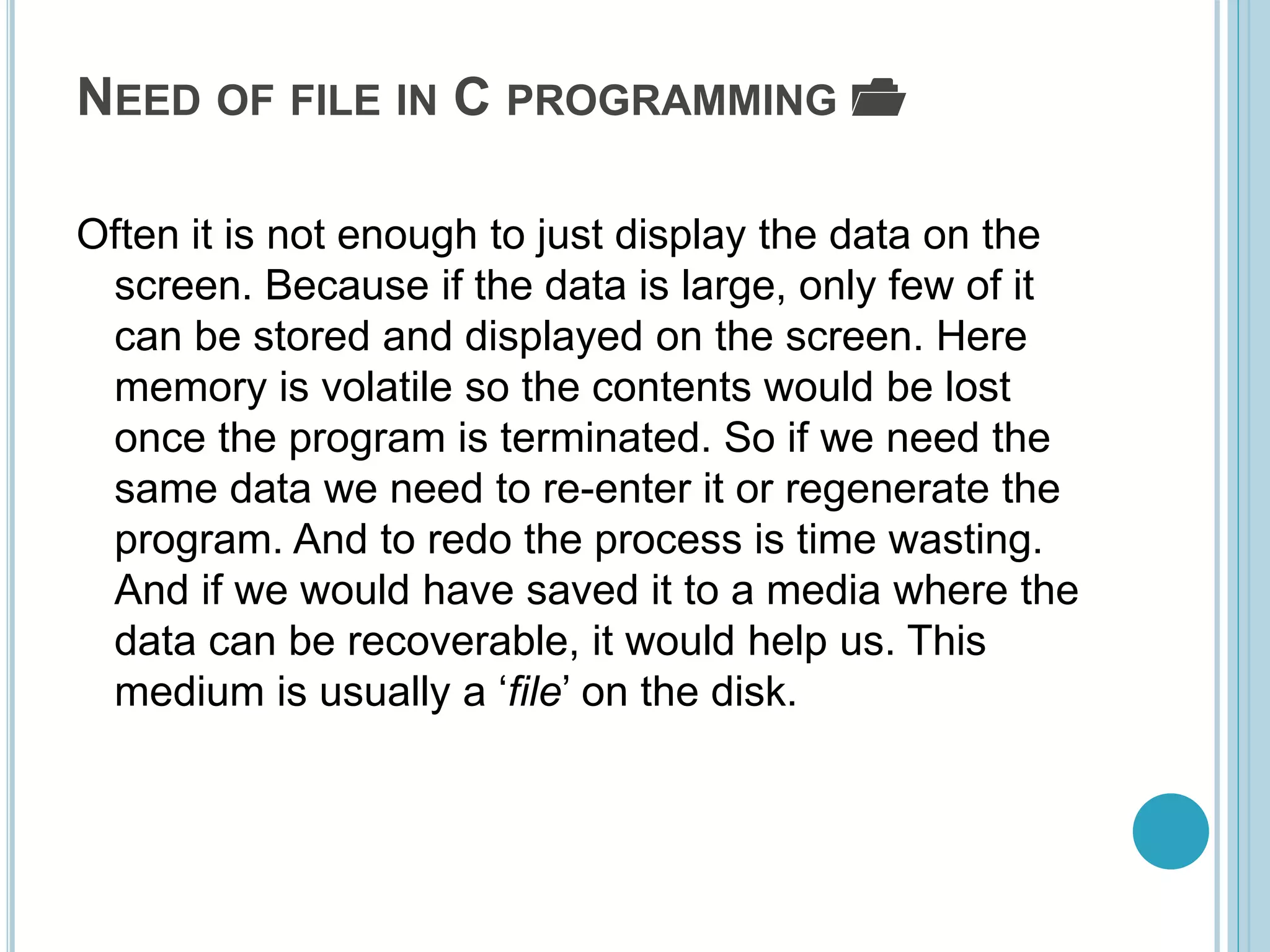
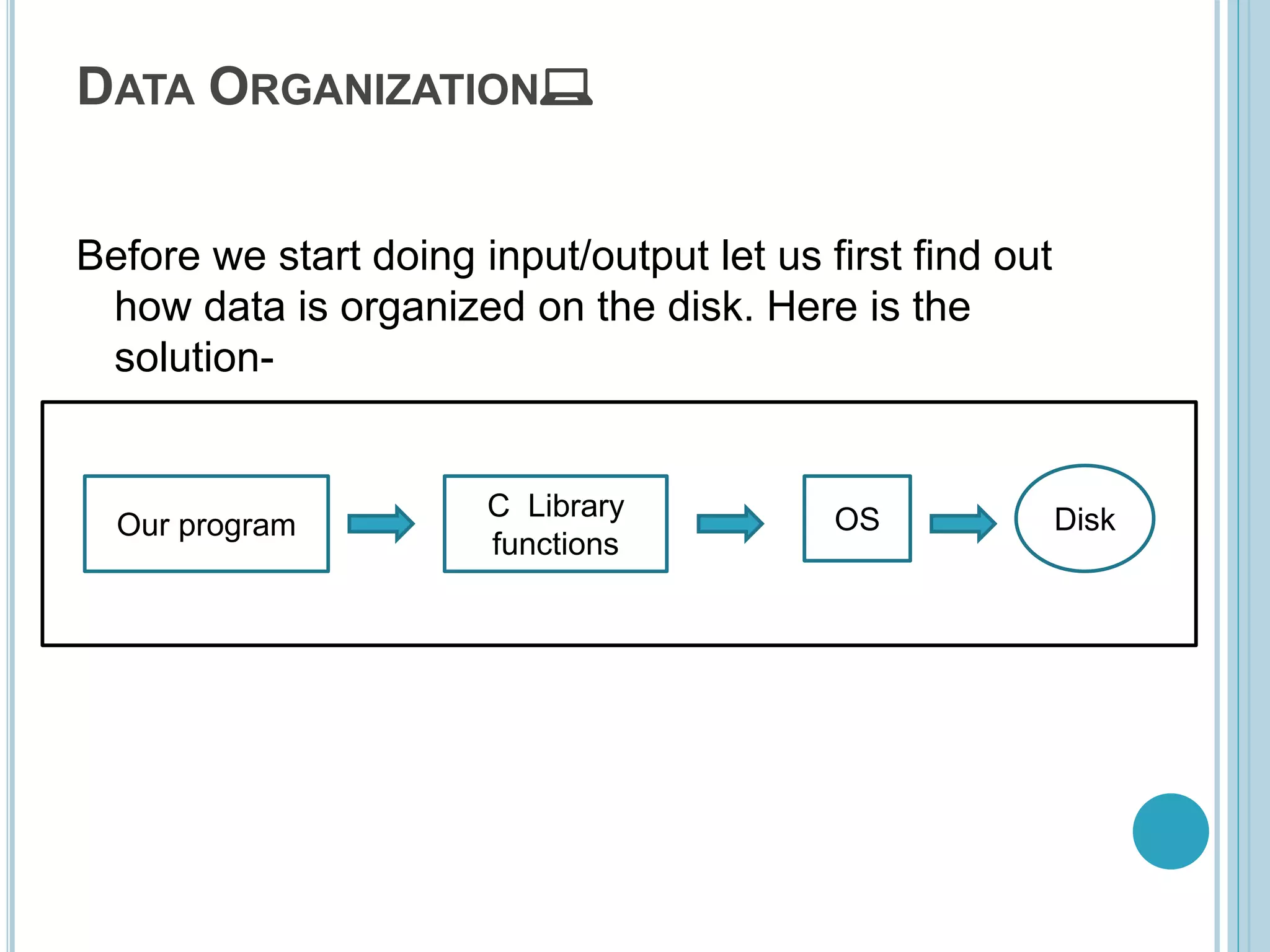
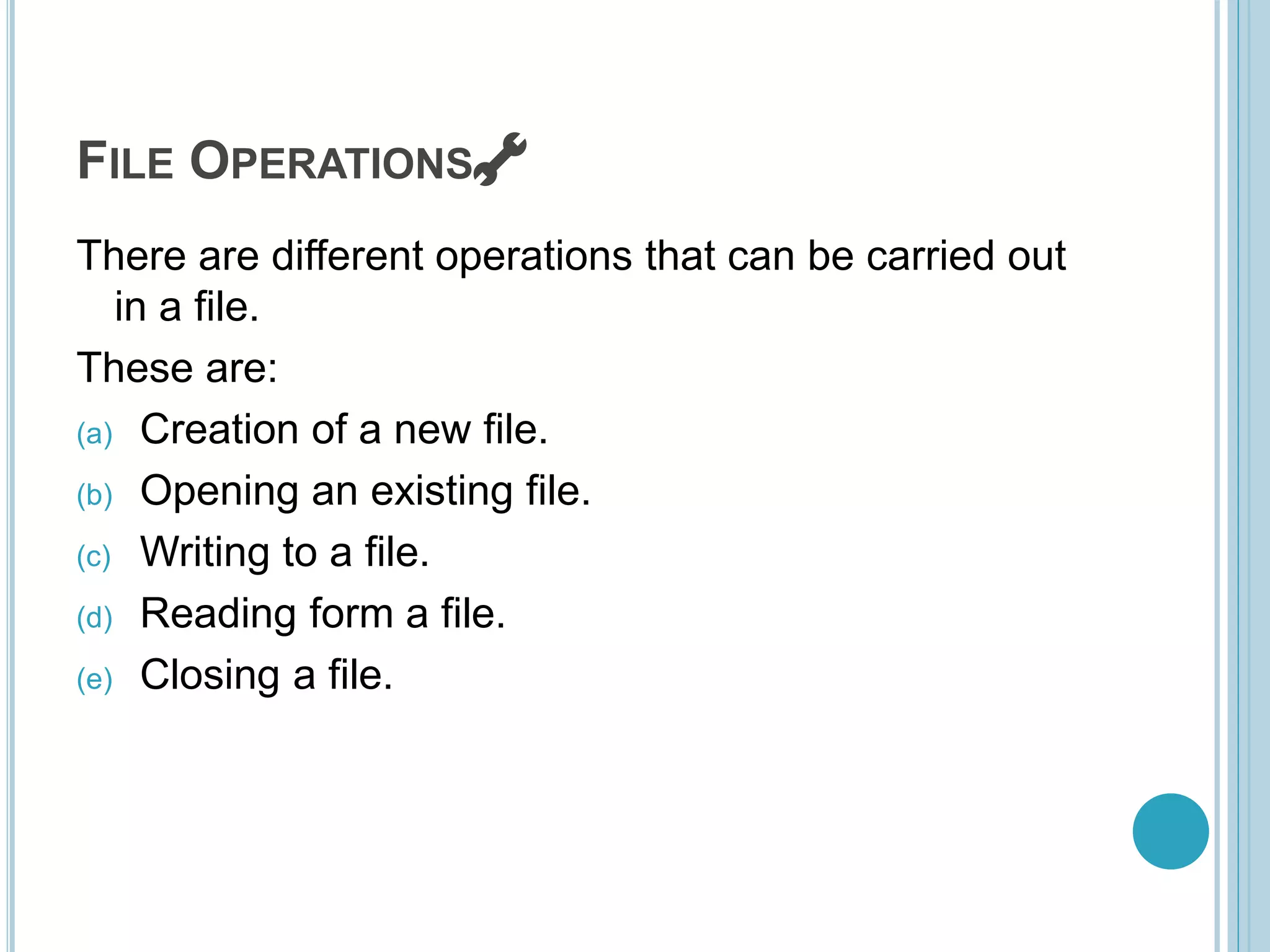
![PROGRAM TO CREATE A FILE 📣 /* C program to create a file called emp.rec and store information * about a person, in terms of his name, age and salary */ #include <stdio.h> #include <conio.h> void main() { FILE *fptr; char name[20]; int age; float salary; /* open for writing */ fptr = fopen("emp.c", "w"); printf("Enter the name n"); scanf("%s", name); fprintf(fptr, "Name = %sn", name); printf("Enter the agen"); scanf("%d", &age); fprintf(fptr, "Age = %dn", age); printf("Enter the salaryn"); scanf("%f", &salary); fprintf(fptr, "Salary = %.2fn", salary); fclose(fptr); }](https://image.slidesharecdn.com/introductionoffilehandling-180116060554/75/Introduction-of-file-handling-7-2048.jpg)



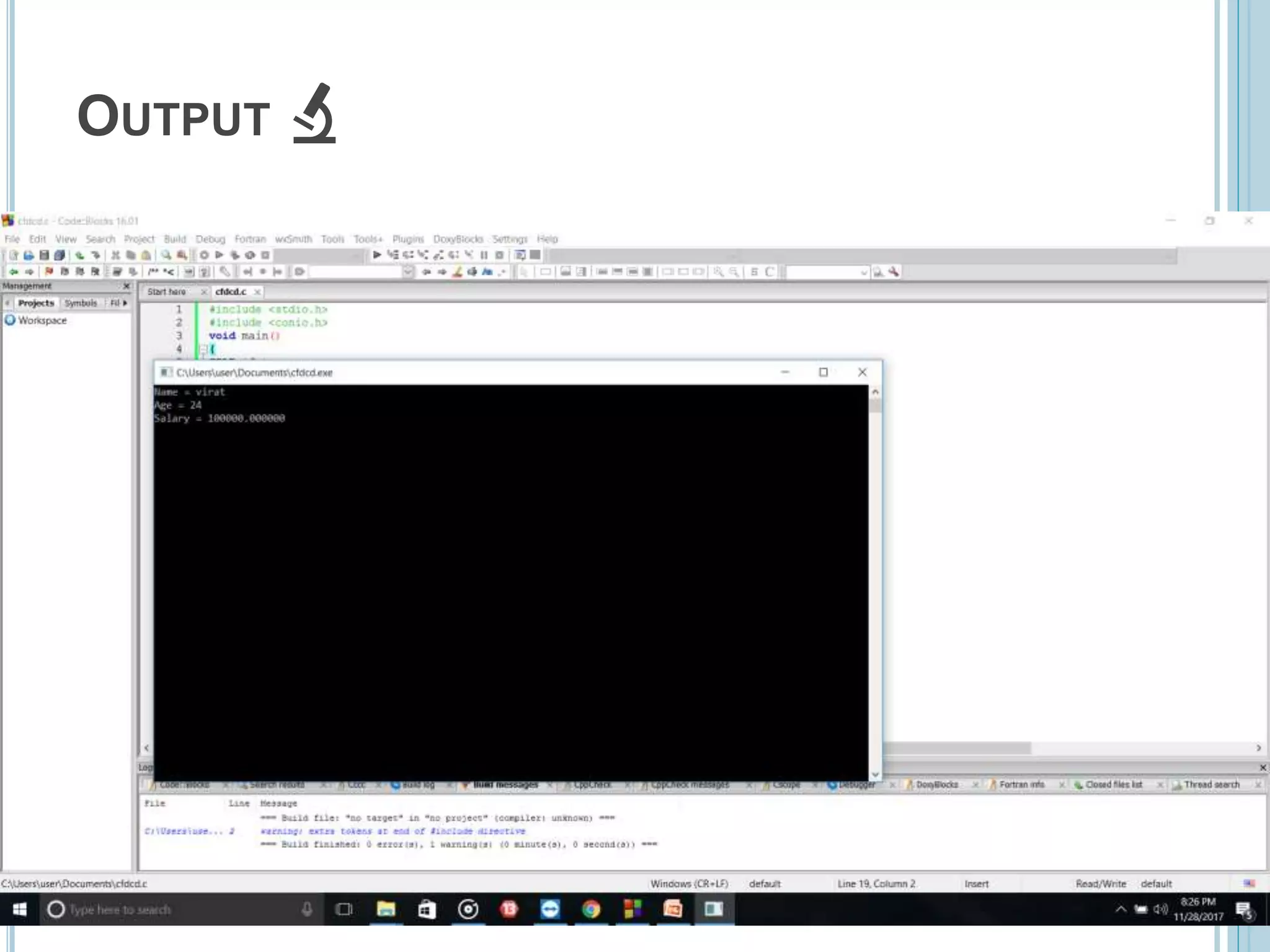
![/*PROGRAM IN APPEND MODE*/ #include <stdio.h> #include <conio.h> void main() { FILE *fptr; char name[20]; int age; float salary; fptr = fopen("emp.c", “a"); printf("Enter the name n"); scanf("%s", name); fprintf(fptr, "Name = %sn", name); printf("Enter the agen"); scanf("%d", &age); fprintf(fptr, "Age = %dn", age); printf("Enter the salaryn"); scanf("%f", &salary); fprintf(fptr, "Salary = %.2fn", salary); fclose(fptr); }](https://image.slidesharecdn.com/introductionoffilehandling-180116060554/75/Introduction-of-file-handling-12-2048.jpg)


